Exploration Snapshot: Eight gold companies mining in Canada
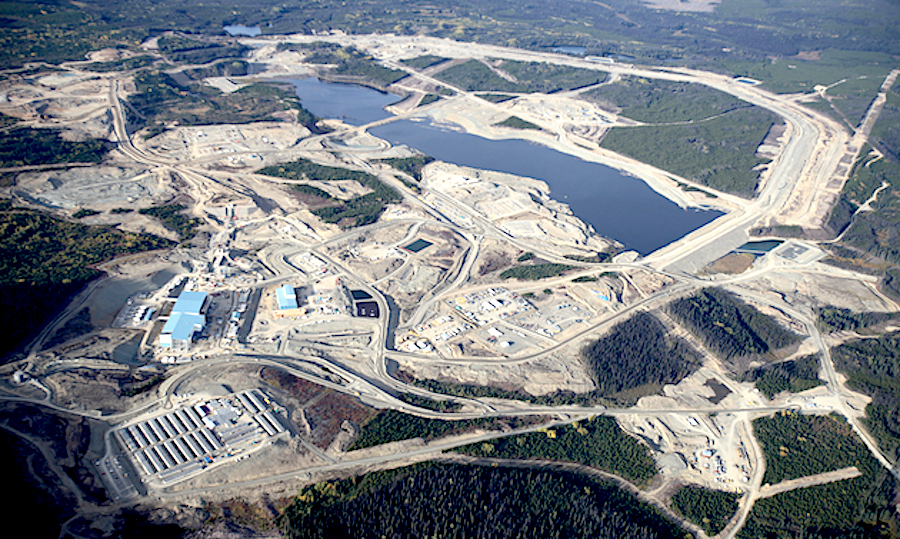
Canada’s prolific geological terrain and adherence to the rule of law position the country as a go-to destination for companies looking to establish and operate mineral projects. A fall in the value of the Canadian dollar over the past few years, coupled with a recent upswing in the gold price, make gold mining in the country particularly appealing at this time. Here, we present eight companies with exposure to gold assets in Canada.
Centerra Gold
Centerra Gold (TSX: CG) is a gold producer with operations in Canada, the Kyrgyz Republic, and Turkey.
The company’s Mount Milligan open pit, 145 km northwest of Prince George, B.C., is a 60,000 tonne per day copper and gold mine. This year, the asset is expected to produce 140,000 oz. to 160,000 oz. gold and 80 million lb. to 90 million lb. copper at all-in sustaining costs (AISCs) of $885 to $935 per oz. gold.
Centerra acquired this mine through a $1.1-billion purchase of Thomson Creek Metals back in 2016. Royal Gold (NASDAQ: RGLD) has a gold and copper stream on the operation, at 35% of payable gold and 18.75% of payable copper with gold purchased at $435 per oz. and copper at 15% of the spot price.
Mount Milligan open pit, 145 km northwest of Prince George, B.C., is a 60,000 tonne per day copper and gold mine
In February, the company announced that it had poured first gold at its Oksut mine in Turkey. The 11,000 tonne-per-day heap leach operation, 295 km southeast of Ankara, has an 8-year mine life and is forecast to churn out 80,000 oz. to 100,000 oz. gold this year at AISCs of $650 to $700 per ounce.
The company’s Kumtor open-pit mine in the Kyrgyz Republic, 350 km southeast of the capital city of Bishkek, sits within the 1,500-km long Tien Shan metallogenic belt and has been producing gold since 1997. Last year, it churned out 600,000 oz. at AISCs of $598 per ounce. This year, Kumtor is expected to generate a further 520,000 oz. to 560,000 oz. gold at AISCs of $750 to $800 per ounce. Additional exploration is underway to define new zones of gold mineralization.
With its first quarter earnings release in May, Centerra announced that the covid-19 pandemic would not impact production guidance for the year.
The company’s additional assets include the past-producing Thompson Creek molybdenum mine in Idaho, the Kemess copper-gold project in B.C., as well as a 50% stake (50% Premier Gold [TSX: PG]) in the Greenstone project within Ontario’s Geraldton-Beardmore greenstone belt, one of Canada’s largest undeveloped open-pit gold projects.
Centerra Gold has a C$4.1-billion market capitalization.
GFG Resources
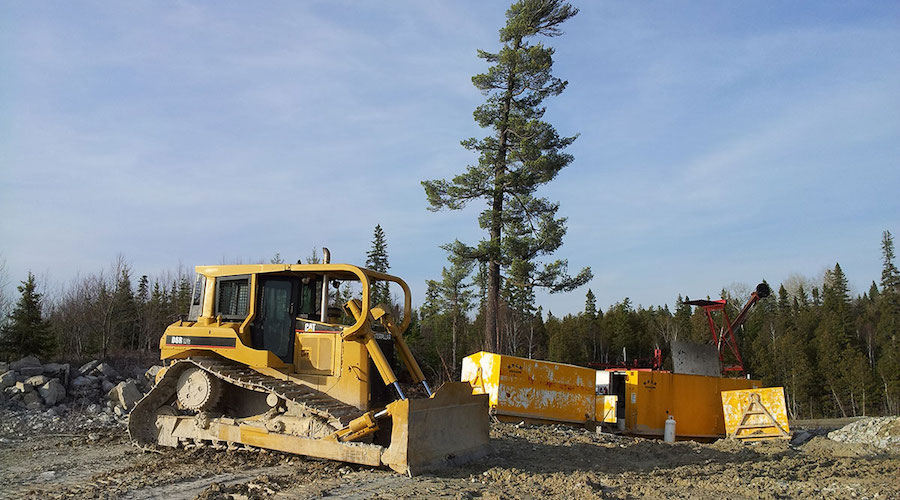
GFG Resources (TSXV: GFG) holds exploration-stage gold assets in Ontario and Wyoming.
The company’s Pen and Dore gold projects, west of Timmins, together cover over 680 square kilometres. Pen is the more advanced of the two – at 445 sq. km, it features a 40-km long section of Archean greenstone with interpreted western extensions of the Porcupine-Destor fault zone. Large-scale targets at the site include the Reeves, Deerfoot, Slate Rock and Tremblay areas.
In April, GFG announced that it intersected a high-grade gold system at Nib, part of the Pen project, where a diamond drill hole returned a 9-metre long interval of 71.27 grams gold per tonne starting at 52 metres. According to the company, this intercept is the most significant intercept from the Pen project and suggests that Nib may host a large-scale gold system. GFG plans to complete follow-up drilling in this area in the third quarter of the year, as part of an 8,500-metre program. Nib lies within the Reeves target area, which covers 4 km by 6 kilometres.
The company’s Pen and Dore gold projects, west of Timmins, together cover over 680 square kilometres
In January, the company released drill results from the HGM prospect at Pen. Highlight intercepts include 2 metres of 7.53 grams gold, 1 metre of 25.96 grams gold and 7 metres of 0.93 gram gold. These results appear to confirm the company’s geologic model of a gold system with multiple stacked high-grade lenses. HGM is within the 2 km by 6 km Deerfoot target, which lies along the Porcupine-Destor fault zone. There are currently three high-grade gold prospects at Deerfoot: HGM, Sewell and Crawford.
The company has been using till sampling to pursue targets at Pen. This work has confirmed existing priority areas and generated new targets for follow-up.
The 212-sq.-km Dore gold project sits between Newmont’s (NYSE: NEM, TSX: NGT) Borden gold mine and Iamgold’s (TSX: IMG, NYSE: IAG) Cote Lake site. The asset hosts the Rundle shear zone, a regional deformation structure associated with porphyry intrusive bodies, and several gold occurrences. GFG plans to complete follow-up geophysical and geochemical surveys at the project to build a structural model. Only 59 historic drill holes have been documented across the grounds.
In Wyoming, GFG holds the 135 sq. km Rattlesnake Hills gold project, 100 km southwest of Casper. This project is within a 1,500-km long belt of intrusives. There are three areas of gold mineralization defined at Rattlesnake Hills: North Stock, Antelope Basin and Blackjack, all of which remain open.
In May, the company closed a $5.9-million private placement financing with Alamos Gold (TSX, NYSE: AGI) purchasing shares to hold a 9.9% interest in GFG.
GFG Resources has a C$32.5-million market capitalization.
Gold Terra Resource
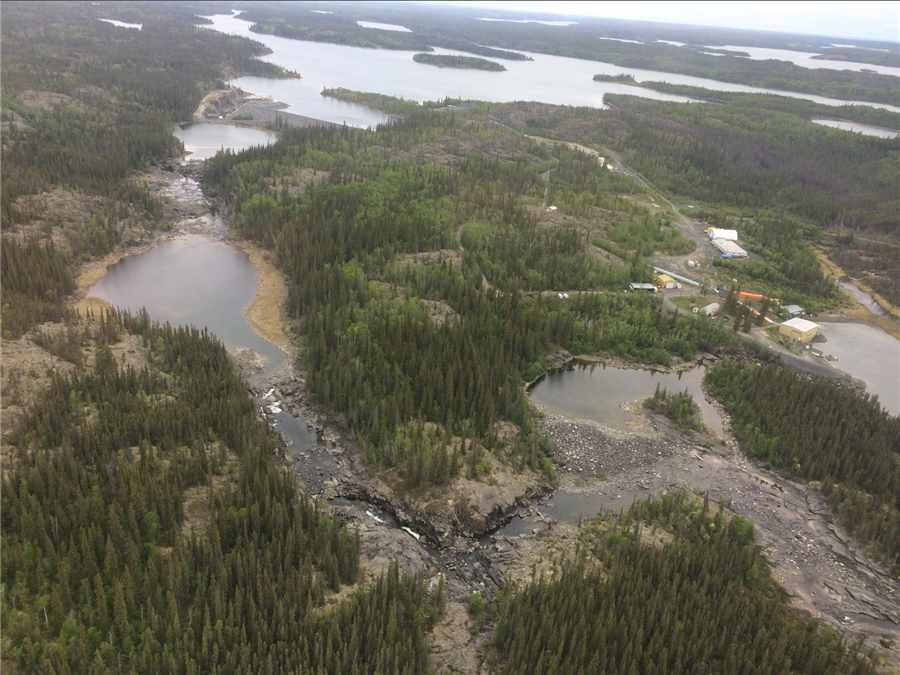
Gold Terra Resource (TSXV: YGT) changed its name from Terrax Minerals in February 2020 and its flagship project is the 790-sq.-km Yellowknife City gold project, 10 km from Yellowknife in the Northwest Territories. The property is on trend with the past-producing Giant and Con mines, which generated a total of 14 million oz. gold.
Yellowknife City lies within the Yellowknife greenstone belt and covers over 65 km of prospective strike along the Campbell shear. In November of last year, the company tabled an initial mineral resource for four deposits at the site (Crestaurum, Mispickel, Sam Otto and Barney), all of which are within a 3 km radius. The pit-constrained component is made up of three deposits, with total inferred resources of 11.6 million tonnes grading 1.4 grams gold per tonne for a total of 523,000 ounces. Additional underground inferred resources across the four deposits stand at 1.2 million tonnes at 5.7 grams gold for a further 212,000 ounces.
Yellowknife City lies within the Yellowknife greenstone belt and covers over 65 km of prospective strike along the Campbell shear
Sam Otto is the largest of the four deposits and Crestaurum is primarily an underground resource; Barney and Mispickel are the smaller deposits. The Sam Otto corridor covers 4.5 km of strike within a shear zone up to 130 metres wide and Crestaurum shears extend over 3.5 km of strike with the underground deposit extending over 1.2 km of this trend.
Exploration work at Yellowknife City is focused on growing the resource inventory. In the first quarter, Gold Terra drilled 10,000 metres at Sam Otto, with up to a further 10,000 metres planned later this year for Crestaurum ahead of a year-end resource update.
Exploration results released in May from Sam Otto include 51 metres of 1.3 grams gold as well as 52 metres of 1.18 grams gold. According to the company, the most recent drill campaign grew the footprint of the mineralization in the resource model.
Gold Terra first started exploring a 37-sq.-km section of Yellowknife City back in 2013 and grew its land position over the next six years.
In October of last year, Gold Terra acquired Gold Matter, which added the Mulligan gold project in New Brunswick to its portfolio, and it plans to start drilling a gold-silver discovery at the site this year.
Gold Terra Resource has a C$51.4-million market capitalization.
Kore Mining
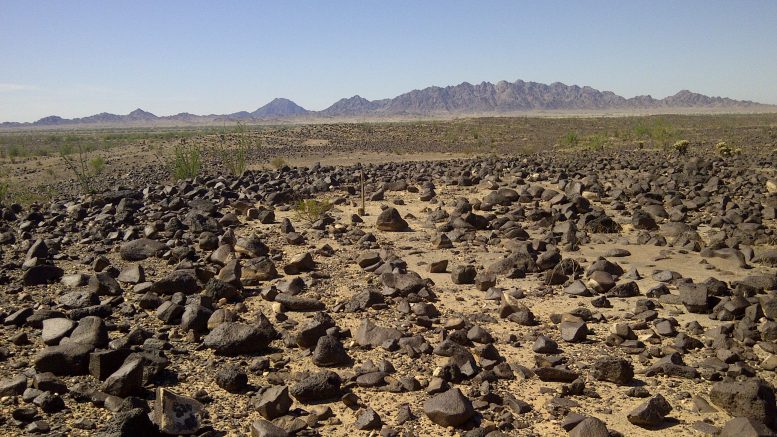
Kore Mining (TSXV: KORE) is focused on gold exploration in British Columbia and California.
Kore Mining’s wholly owned FG Gold and Gold Creek projects are in the Cariboo region of British Columbia. FG, at 130 sq. km, hosts a 20-km-long soil geochemical and geophysical anomaly around a regional structure. The site includes an orogenic gold deposit, covering 3 km of strike, with measured and indicated resources of 15.2 million tonnes grading 0.78 gram gold per tonne for a total of 376,000 oz. and 27.5 million inferred tonnes at 0.72 gram gold totalling 634,900 ounces.
Kore Mining’s wholly owned FG Gold and Gold Creek projects are in the Cariboo region of British Columbia
In May, the company released drill results from this project, reporting 77 metres of 1.1 grams gold, starting at 5.5 metres. Additional drilling is underway to extend the mineralization.
The 97 sq. km Gold Creek project covers 8.5 km of strike and lies 8 km northwest of Spanish Mountain Gold’s (TSXV: SPA) Spanish Mountain deposit. Drilling is also planned for the site.
The company’s wholly owned Imperial project in California is within 14 km of Equinox Gold’s (TSXV: EQX, NYSE-AM: EQX) Mesquite mine. In April, the company reported the results of a preliminary economic assessment (PEA) for the asset, which outlined a shallow open pit, run-of-mine heap leach operation.
With average annual gold production estimated at 146,000 oz. at AISCs of $852 per oz. over an eight-year mine life, the pre-production capital cost is pegged at $142 million. The resulting after-tax net present value estimate, at a 5% discount rate, is $343 million, with a 44% internal rate of return.
Indicated resources at Imperial stand at 45.7 million tonnes grading 0.59 gram gold for a total of 877,000 oz., with additional inferred resources of 90.9 million tonnes at 0.46 gram gold for a further 1.3 million gold ounces. The resources remain open at depth and along strike.
The Imperial project covers 28 km of strike and Kore has identified target areas for resource expansion within the landholding. These include the 6-km long Mesquite East area and the 7-km long Ogilby target, in addition to prospects within the 6-km long zone host to current resources. This year, Kore plans to apply for additional drill permits and restart the permitting process at Imperial.
The company also wholly owns the Long Valley project in Mono County, California with indicated resources of 66.8 million tonnes at 0.58 gram gold for 1.2 million oz. gold and inferred resources of 23.6 million tonnes grading 0.65 gram gold for 486,000 gold ounces. The gold deposit has been drilled down to an average depth of 60 metres, with a current footprint of 3 km by 2 km and sits within a 6 km trend. Long Valley features an oxide zone, followed by deeper sulphide mineralization; the near-surface oxide gold portion remains open. Additional drilling is planned for the site this year.
Kore Mining has a C$69.1-million market capitalization.
New Gold
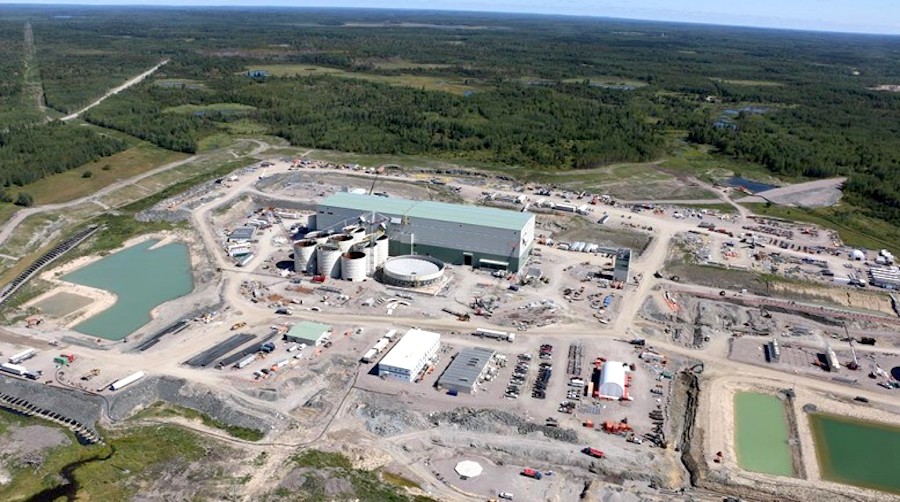
New Gold (TSX, NYSE: NGD) is focused on gold and copper production, with two mines in Ontario and British Columbia.
The company’s wholly owned Rainy River open pit mine, 65 km northwest of Fort Frances, Ontario, has been in operation since 2017. In February, New Gold published updated life of mine plans for its two producing assets.
Within the updated plan, Rainy River is expected to continue open pit operations until 2024, with underground operations coming online in 2022 and stopping by 2028. The resulting average annual production is envisioned at 289,000 oz. gold at AISCs of $967 per ounce. Additional exploration is underway to assess potential for shear-hosted gold within a 15-km long regional corridor.
Rainy River is expected to continue open pit operations until 2024, with underground operations coming online in 2022 and stopping by 2028
The New Afton 16,000 tonne per day underground block cave mine, 10 km west of Kamloops, has a mine life reaching out to 2030. As part of the February mine plan updates, this asset is anticipated to churn out an average of 260,000 gold-equivalent oz. over the next ten years at AISCs of $681 per gold-equivalent ounce. In March, the company closed a $300-million partnership with the Ontario Teacher’s Pension Plan, with the latter acquiring a 46% free cash flow interest in New Afton in exchange for a one-time upfront cash payment. Proceeds of this transaction are intended for debt reduction and additional financial flexibility.
Near-mine exploration efforts around New Afton are focused on resource expansion. District-scale exploration is also ongoing within a 12-km long trend about 3 km from the New Afton mill.
At the company’s Blackwater development project in B.C., studies are underway to determine an optimal mine size. Total reserves for this asset stand at 344.4 million tonnes at 0.74 gram gold and 5.5 grams silver for a total of 8.2 million oz. gold and 60.8 million oz. silver.
In mid-April, with its first-quarter results release, the company announced that it is withdrawing its production guidance for this year due to uncertainties around the covid-19 pandemic.
New Gold has a C$1.1-billion market capitalization.
Scottie Resources
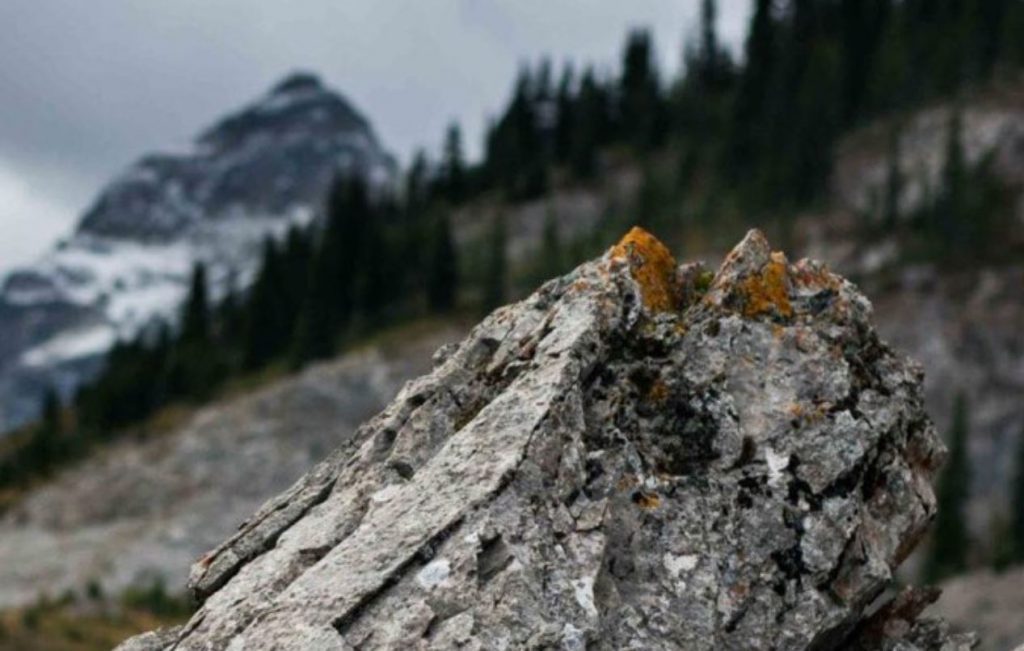
Scottie Resources (TSXV: SCOT) is focused on exploration within B.C.’s Golden Triangle, where the company wholly owns the past-producing Scottie gold mine. Scottie holds over 185 sq. km of ground within the southern portion of the Triangle.
The 3.2-sq.-km Scottie mine is 32 km north of Stewart and operated between 1981 and 1985, producing 95,426 oz. gold from an average head grade of 16.2 grams gold. This site features six portals, as well as shafts, a rail system and 7 km of underground drifts with all-weather road access and a historic tailings facility.
In January, Scottie released drill results from the Scottie gold mine property, which returned 25 metres of 7.27 grams gold and 3.83 grams silver. According to the company, the work extended the historic M-zone (the primary source of the historical ore) and confirmed that the mineralization at the site remains open for expansion.
In January, Scottie released drill results from the Scottie gold mine property, which returned 25 metres of 7.27 grams gold and 3.83 grams silver
The Scottie mine hosts parallel mesothermal gold-pyrrhotite veins. The majority of historical drilling was completed from underground, where single holes focused on specific production targets.
During last year’s field season, exploration work at the Summit Lake property led to the discovery of the Domino showing, 1.9 km west of the Scottie mine. Grab samples from the area returned up to 536 grams gold and 735 grams silver; a chip sample also assayed 10.5 grams gold and 14 grams silver over 5 metres.
According to the company, Domino lies on an east-west trending structure that is on strike with the Scottie mine. In April 2019, Scottie entered into an option agreement with a third party to acquire a 100% interest in the 15-sq.-km Summit Lake holding in exchange for total cash payments of $250,000 and 2.2 million shares of Scottie.
Scottie also has the option to acquire a 100% interest in the 4.7-sq.-km Bow property, immediately northeast of the Scottie mine. The company entered into the option agreement in December 2018, with Decade Resources (TSXV: DEC) agreeing to transfer ownership of Bow to Scottie for five cash payments totalling $1 million. Drill results released in January from the project include 35 metres of 7.44 grams gold and 1.29 grams silver from the Blueberry vein system.
In May, the company closed a $3.5-million oversubscribed private placement. Exploration plans for the year include 5,000 metres of drilling, geophysical surveys as well as surface mapping and sampling.
Scottie Resources has a C$26.1-million market capitalization.
Wallbridge Mining
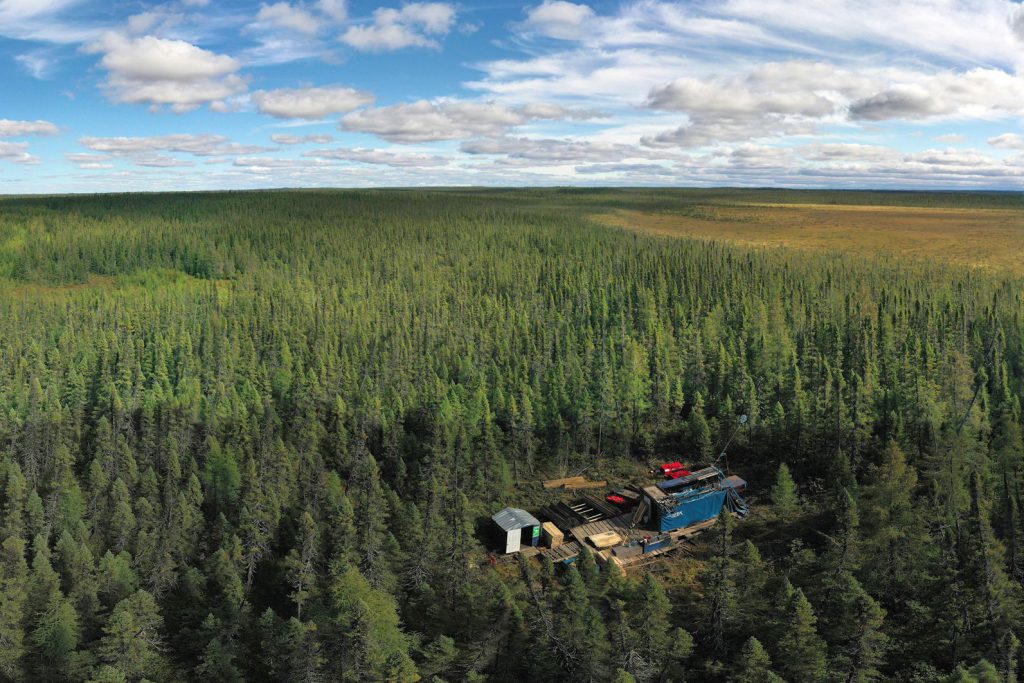
Wallbridge Mining’s (TSX: WM) principal asset is the 85.6-sq.-km Fenelon gold project, 75 km from Matagami in Quebec. In March, the company consolidated these project grounds though a $110-million acquisition of Balmoral Resources, which grew the Felenon holdings by 75.1 sq. km.
The Fenelon project is part of the Detour-Fenelon gold trend within the Abitibi greenstone belt. In May, the company reported a series of exploration results from the Area 51, Tabasco-Cayenne and Main Gabbro areas at the site.
The Fenelon project is part of the Detour-Fenelon gold trend within the Abitibi greenstone belt
Area 51 sits within the hangingwall of the Tabasco-Cayenne shear system with mineralization traced over an area of 600 metres by 500 metres. The most recent drill highlights include 58.5 metres of 1.7 grams gold, 14.9 metres of 5.77 grams gold as well as 4.1 metres of 19.55 grams gold. The company plans to drill test the grounds acquired from Balmoral for extensions of the Area 51 gold mineralization with additional follow-up work planned for the Ripley and Reaper gold zones.
Intercepts of note from the Tabasco-Cayenne shear include 56 metres of 4.84 grams gold, 19.2 metres of 8.41 grams gold and 8.5 metres of 9.76 grams gold. This system has been tested over 500 metres to 600 metres of strike thus far. Drill highlights from the Main Gabbro area include 5.4 metres of 70.84 grams gold and 7.1 metres of 32.26 grams gold – this zone is closest to existing underground infrastructure at the site.
Wallbridge acquired the Fenelon project in 2016. This year the company plans to drill 70,000 metres to 80,000 metres at the site ahead of a maiden resource estimate scheduled for 2021.
The Balmoral acquisition also added the Grasset nickel deposit to Wallbridge’s exploration portfolio. This project is east of the Fenelon grounds with indicated resources of 3.5 million tonnes grading 1.79% nickel-equivalent for a total of 119 million lb. of nickel. Inferred resources stand at 91,100 tonnes grading 1.19% nickel-equivalent for a total of 2.1 million lb. of nickel.
Wallbridge Mining has a C$686.3-million market capitalization.
Wesdome Gold Mines
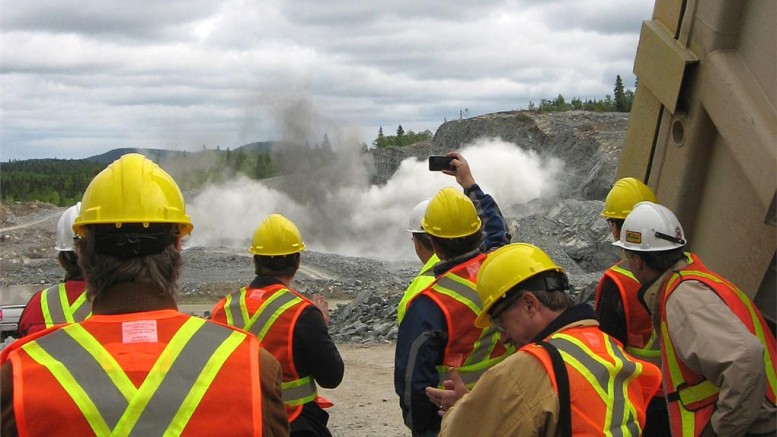
Wesdome Gold Mines (TSX: WDO) operates the Eagle River complex near Wawa, Ontario, and holds the Kiena project in Quebec.
In May, Wesdome announced that, despite the COVID-19 pandemic, the company is maintaining its 2020 production guidance of 90,000 oz. to 100,000 oz. gold at AISCs of $985 to $1,049 per ounce. The majority of this production is expected to come from the Eagle River underground mine, with a minor contribution from the Mishi open pit within the Eagle River complex.
The Eagle River underground and Mishi pit feed a central 850 tonne per day mill at Eagle River with additional exploration underway to extend existing zones of mineralization and identify parallel lenses. Extension and definition drill highlights released in February from the Falcon zones include 6 metres of 16 grams gold and 4 metres of 160.5 grams gold.
The company also holds the Moss Lake property, covering 36 km of strike along the Shebandowan greenstone belt, 100 km west of Thunder Bay, Ontario
Notable intercepts from the 303 Lens include 5 metres of 128.8 grams gold and 13 metres of 23.8 grams gold.
The 70.5-sq.-km Kiena complex in Val d’Or has been on care and maintenance since 2013 and contains a permitted, 2,000 tonne per day mill, a 930-metre shaft, and a ramp system that extends to 1,050 metres depth. Total measured and indicated resources at the property are at 2.8 million tonnes grading 8.67 grams gold for a total of 788,100 oz. with further inferred resources of 2.9 million tonnes at 8.51 grams gold for a further 798,100 oz.; approximately half of these resources are contained within the higher-grade Kiena Deep A zone.
In May, the company released the results of a preliminary economic assessment (PEA) on a restart of Kiena. The PEA outlined an 8-year operation, producing an average of 85,931 oz. gold per year at AISCs of $512 per oz., with an initial capital outlay of $35 million. The resulting after-tax net present value estimate, at a 5% discount rate, came in at $416 million, with a 102% internal rate of return. A follow-up prefeasibility study is expected by the first quarter of 2021, ahead of a decision to restart production.
A resource update for Kiena is expected in the fourth quarter. A geophysical survey over the site has also generated additional targets for drill testing.
The company also holds the Moss Lake property, covering 36 km of strike along the Shebandowan greenstone belt, 100 km west of Thunder Bay, Ontario. The property hosts measured and indicated resources of 1.4 million oz., with additional inferred resources of 1.8 million oz. Resources grade 1.1 grams gold.
Wesdome has a C$1.6-billion market capitalization.
(This article first appeared in The Northern Miner)
{{ commodity.name }}
{{ post.title }}
{{ post.date }}
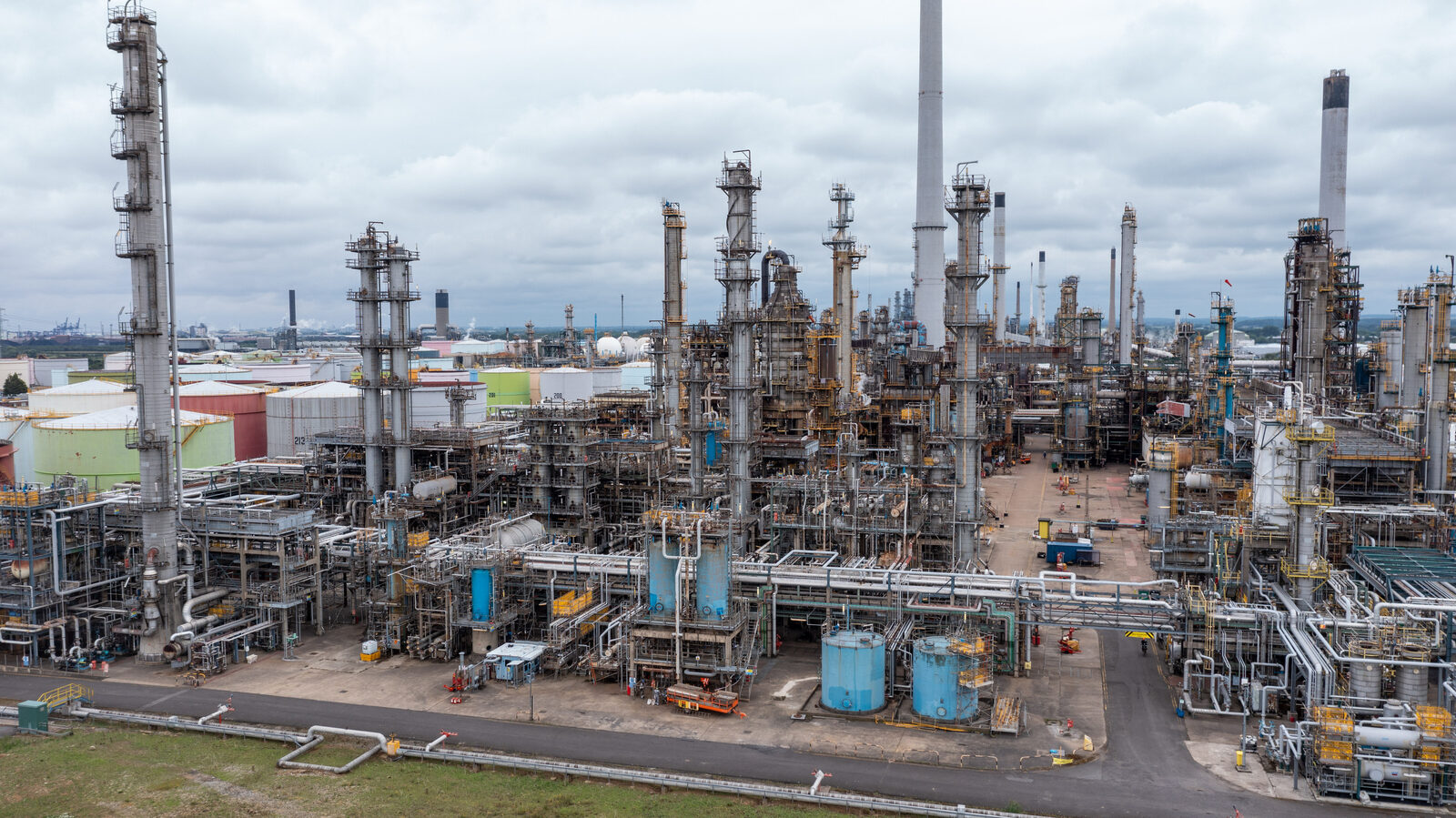
Comments